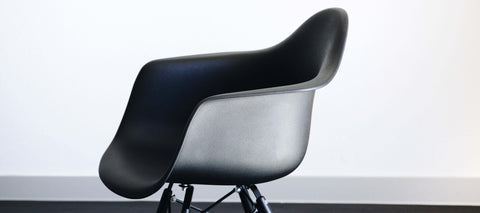

Plastics such as ABS, Polyethylene (PE), Polycarbonate (PC), Polypropylene (PP), and Polyvinyl Chloride (PVC) are commonly used materials for furniture.
Improvements in plastics technology in the 60s gave rise to a boom in the use of plastics as a material for furniture and has been a very popular material since. It has become nearly impossible to imagine a world in which plastic is not a part of our daily lives as it is a material that is widely favored for its versatility and many advantageous uses.
Unfortunately, single-use plastics undeniably have a significant impact on the environment. However, when plastic is utilized in the production of high-quality furniture, even if it is not made from recycled materials, the impact is considerably reduced. This is because well-maintained plastic furniture has a longer lifespan compared to furniture made from other materials.
By opting for durable furniture, we can avoid the cycle of constantly purchasing cheap, "fast furniture", which ultimately leads to more waste. Instead, investing in long-lasting plastic furniture encourages responsible consumption, as it reduces the frequency of furniture disposal and promotes extended usage. By choosing durable options, you can contribute to a more sustainable approach to furnishing your space.


